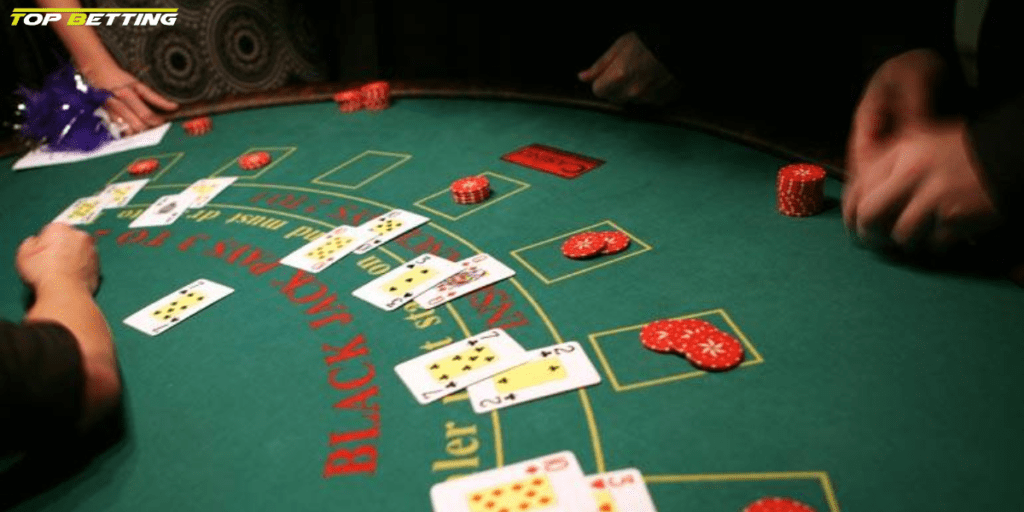
The rules of blackjack for beginners
Are you a beginner when it comes to the exciting world of blackjack? Don’t worry, we’ve got you covered! In this article, we will walk you through the rules of blackjack and help you gain a solid understanding of this popular casino game.
How to Play Blackjack
Blackjack, also known as twenty-one, is a card game where the goal is t
o beat the dealer’s hand without exceeding 21 points. The game is played with one or more decks of 52 cards. Each card has a specific value, and the objective is to get a hand total that is higher than the dealer’s without going over 21.
To start the game, each player is dealt two face-up cards, while the dealer receives one face-up card and one face-down card. The value of the cards is determined as follows:
- Number cards (2-10) are worth their face value.
- Face cards (Jack, Queen, and King) are worth 10 points.
- An Ace can be worth either 1 or 11 points, depending on which value benefits the player the most.
Once the initial cards are dealt, each player has several options to choose from:
Hit: If a player wants to receive another card game to improve their hand total, they can choose to “hit.” The dealer will then deal them an additional card.
Stand: If a player is satisfied with their hand and believes it is strong enough to beat the dealer, they can choose to “stand.” This means they do not want any more cards.
Double Down: If a player is confident in their hand and wants to increase their bet, they can choose to “double down.” This involves doubling their original wager and receiving only one additional card.
Split: If a player’s initial two cards are of the same rank (e.g., two 8s), they can choose to “split” the cards into two separate hands. This requires placing an additional bet equal to the original wager. Each split hand is then played individually.
Surrender: Some casinos offer the option to “surrender” if a player feels their hand is weak and wants to forfeit half of their original bet. This option is not available in all variations of blackjack.
The game continues until all players have made their decisions, and the dealer reveals their face-down card. The dealer must follow specific rules regarding their actions based on the value of their hand. The player wins if their hand total is higher than the dealer’s without exceeding 21, or if the dealer’s hand exceeds 21 (busts).
Understanding the Objective of Blackjack
The main objective of blackjack is to beat the dealer’s hand without going over 21. This means that the player’s hand must have a higher total than the dealer’s, or the dealer must bust (exceed 21) while the player remains under 21. If a player’s hand total exceeds 21, they automatically lose the round, regardless of the dealer’s hand.
It’s important to note that blackjack is a strategic game where players must make decisions based on the value of their hand and the dealer’s upcard. The game is not solely based on luck, but also on the player’s ability to make the right choices at the right time.
The Value of Cards in Blackjack
To become proficient in blackjack, it is crucial to understand the value assigned to each card. Here is a breakdown of the card values:
Number cards (2-10): These cards are worth their face value. For example, a 5 of hearts is worth 5 points.
Face cards (Jack, Queen, and King): These cards are worth 10 points each. So, if you have a Queen of spades and a Jack of diamonds, your hand total would be 20.
Ace: An Ace can be worth either 1 or 11 points, depending on which value benefits the player the most. For instance, if you have an Ace and a 6, you can choose to count the Ace as 11, making your hand total 17. However, if you have an Ace, a 6, and an 8, counting the Ace as 11 would result in a bust (totaling 25). In this case, the Ace is counted as 1, and your hand total becomes 15.
Basic Blackjack Strategy for Beginners
While blackjack is a game of chance, employing a basic strategy can significantly improve your odds of winning. Here are some essential tips for beginners:
Learn the basic strategy: Familiarize yourself with the optimal decisions to make in different situations. There are numerous blackjack strategy charts available online that outline the best moves based on your hand and the dealer’s upcard.
Avoid taking insurance: Insurance is a side bet offered when the dealer’s upcard is an Ace. It pays 2:1 if the dealer has a blackjack, but it is generally not a recommended bet in the long run.
Don’t chase losses: It’s essential to set a budget and stick to it. Avoid the temptation to increase your bets after a losing streak, as this can lead to further losses.
Practice bankroll management: Determine the amount of money you are willing to risk and divide it into smaller units. This will help you control your bets and prolong your playing time.
Take advantage of free blackjack games: Many online casinos offer free blackjack games where you can practice your skills without risking real money. Utilize these opportunities to refine your strategy and gain confidence.
Remember, while employing a basic strategy can improve your chances of winning, it does not guarantee consistent wins. Blackjack is still a game of probability, and there will be times when luck may not be on your side. Therefore, it’s essential to approach the game with a mindset of enjoyment rather than solely focusing on winning.
Common Blackjack Terms and Phrases

As you delve into the world of blackjack, you’ll come across various terms and phrases commonly used in the game. Here are a few key terms to familiarize yourself with:
Hard Hand: A hand that does not contain an Ace or contains an Ace valued at 1.
Hand: A hand that contains an Ace valued at 11.
Bust: When a hand’s total exceeds 21.
Push: When the player and the dealer have the same hand total. In this case, the player neither wins nor loses; their bet is returned.
Cut Card: A plastic card used to separate the deck during the shuffle.
Shoe: A device that holds multiple decks of cards and is used to deal them.
Hole Card: The dealer’s face-down card.
Understanding these terms will enhance your understanding of the game and allow you to communicate effectively with dealers and other players.
Blackjack Etiquette and Rules of Conduct
To ensure a pleasant gaming experience for everyone at the blackjack table, it’s important to adhere to certain etiquette and rules of conduct. Here are some guidelines to follow:
Respect the dealer and other players: Treat the dealer and fellow players with courtesy and respect. Avoid using offensive language or displaying aggressive behavior.
Avoid touching your chips once bets are placed: Once the cards are dealt, refrain from touching your chips. The dealer will handle all necessary transactions.
Avoid giving unsolicited advice: Unless someone specifically asks for your input, refrain from offering advice to other players. Each player is responsible for their own decisions.
Do not touch the cards: In most casinos, touching the cards is strictly prohibited. You should handle your cards by using hand signals to communicate your decisions.
Tip the dealer: If you’re having a good run or have received exceptional service from the dealer, it is customary to tip them. Tipping is not mandatory, but it is a way to show appreciation.
Remember, blackjack is a social game, and maintaining a friendly and respectful atmosphere at the table enhances everyone’s experience.
Variations of Blackjack Games
While the basic rules of blackjack remain the same, there are several popular variations you may encounter at the casino. Here are a few examples:
European Blackjack: In this variation, the dealer only receives one card face-up at the beginning of the round. The dealer does not receive a second card until all players have made their decisions.
Spanish 21: Spanish 21 is played with a deck of 48 cards, as all the 10s are removed. This variation introduces special bonus payouts for specific hands, such as a 5-card hand totaling 21.
Double Exposure Blackjack: In this variation, both of the dealer’s cards are dealt face-up. This provides players with more information to make strategic decisions.
Pontoon: Pontoon is a British version of blackjack where the objective remains the same. However, the terminology and some rules differ from traditional blackjack.
Blackjack Switch: In Blackjack Switch, players are dealt two hands and are allowed to switch the second card between the two hands, increasing their chances of winning.
It’s important to familiarize yourself with the specific rules of any blackjack variation before playing, as they may have unique betting options and strategies.
Tips for Winning at Blackjack
While winning at blackjack is never guaranteed, implementing the following tips can help improve your chances:
Master basic strategy: Study and practice basic blackjack strategy to make informed decisions based on the value of your hand and the dealer’s upcard.
Avoid side bets: Side bets, such as Perfect Pairs or 21+3, may seem enticing but generally have a higher house edge and should be approached with caution.
Manage your bankroll: Set a budget for your blackjack sessions and stick to it. Avoid chasing losses and never bet more than you can afford to lose.
Take breaks: It’s important to take regular breaks to clear your mind and avoid making impulsive decisions.
Stay focused and disciplined: Avoid distractions while playing blackjack and maintain a calm and focused mindset. Emotions can cloud judgment and lead to poor decisions.
Remember, blackjack is a game of both skill and luck. While you can employ strategies to improve your odds, the outcome of each hand ultimately depends on chance. Enjoy the game and view winning as a pleasant bonus rather than the sole objective.
Conclusion: Enjoying and Learning from the Game of Blackjack
In conclusion, blackjack is an exciting and rewarding casino game that combines strategy, skill, and a bit of luck. By understanding the rules, learning basic strategy, and practicing good bankroll management, you can enhance your chances of winning and make the most of your blackjack experience.

Remember to approach the game with a positive mindset and enjoy the thrill of each hand. Whether you’re a complete novice or someone looking to brush up on their skills, this guide has equipped you with the knowledge you need to confidently take a seat at the blackjack table and enjoy the game to its fullest. Best of luck, and may the cards be in your favor!











